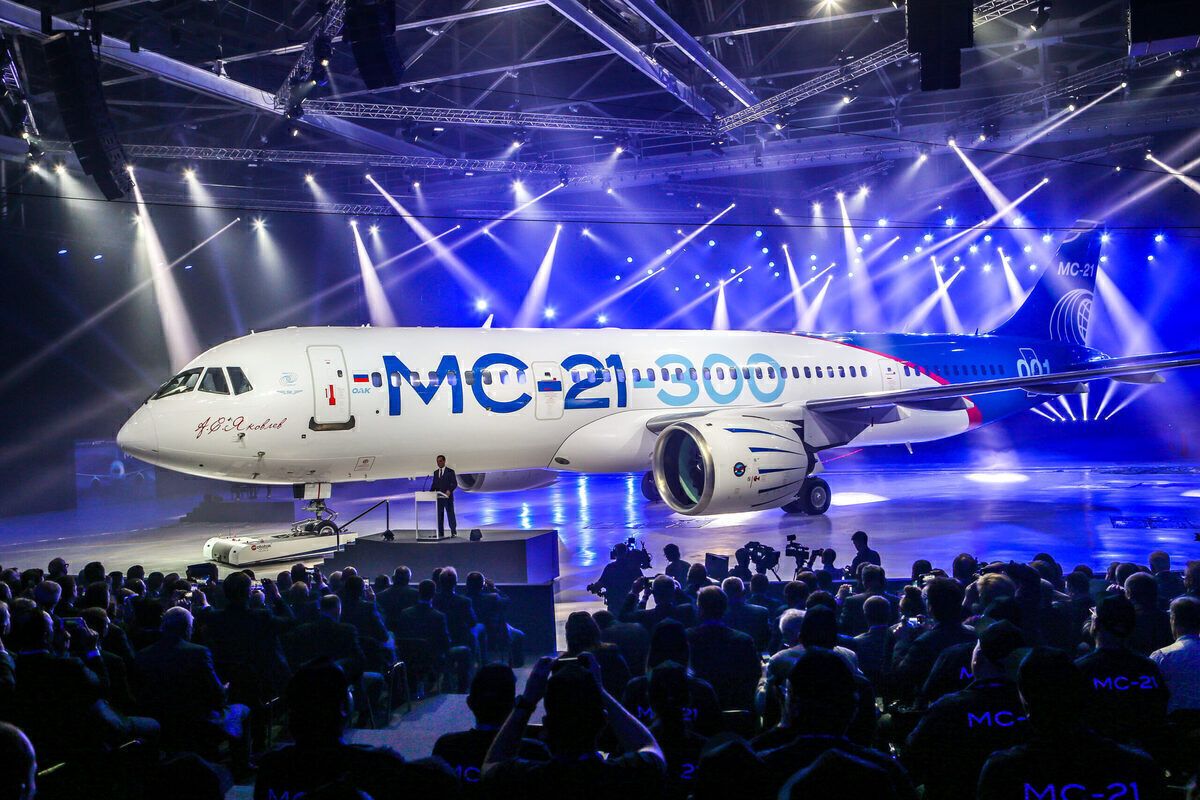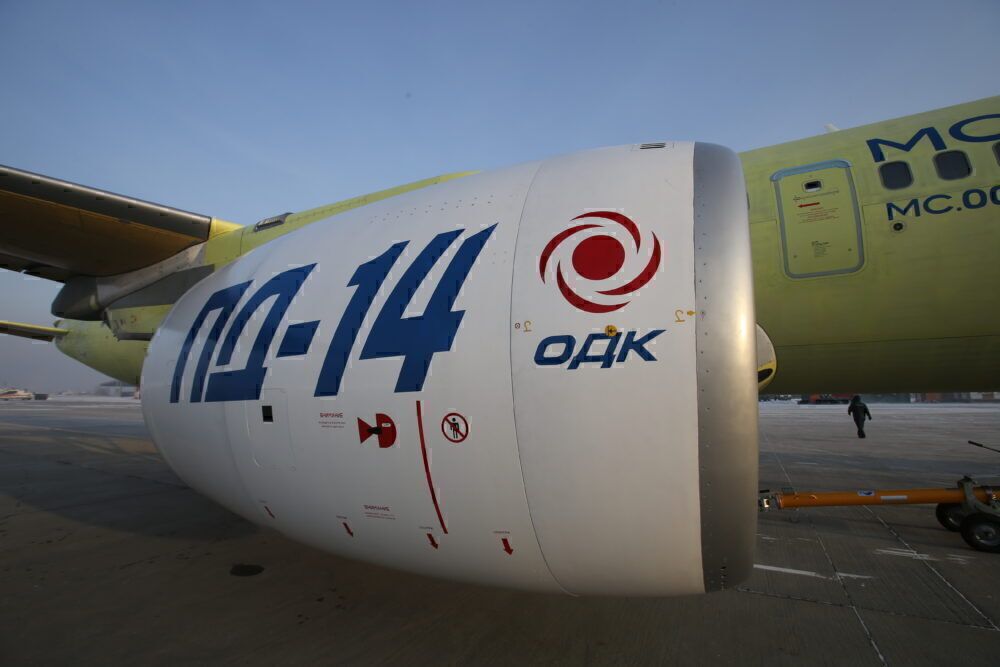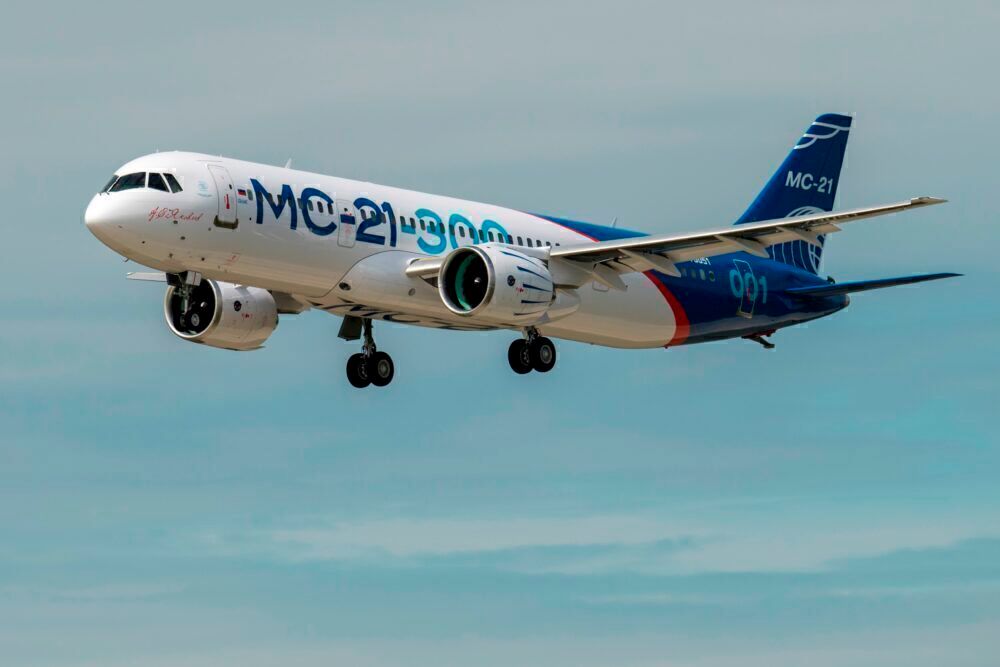During an annual report presentation to the Russian State Duma, Prime Minister Mikhail Mishustin laid out his intention for civil aviation in the country. He affirmed that the nation is gearing up to begin mass-producing the narrowbody MC-21, an aircraft that hopes to challenge Boeing and Airbus’ duopoly.
Russia is gearing up for the MC-21
The Russian Prime Minister Mikhail Mishustin has affirmed his commitment to beginning mass production of the narrowbody aircraft, the MC-21. In a speech to the State Duma, the lower house of the Federal Assembly of Russia, Mishustin laid out his goal to launch large scale production of the Boeing and Airbus challenger, as well as a new turboprop and a light aircraft, saying,
"We plan to start mass production of competitive types of transport, medium-haul MC-21, light-engine Baikal and regional Il-114-300."
The MC-21 is planned to be offered in two variants, the MC-21-300 and a shortened version, the MC-21-200. The -300 will be first, and its prototypes are currently undergoing testing in various scenarios ahead of the hoped-for certification later this year.
Designed to compete with aircraft like the 737 and A320 lines, the MC-21 will seat 163 passengers in a two-class configuration, and will have a range of 3,240 NM (6,000 km). When first revealed to the world, the MC-21 was planned to use Pratt & Whitney PW1400G powerplants, similar to those used on the A320neo family, the A220 and the Embraer E2.
However, in December last year, the MC-21-300 prototype took flight with a pair of Russian-produced powerplants known as the PD-14 engines. Produced by Aviadvigatel, the PD-14 builds on the success of the PS-90, with a 15% improvement in efficiency. A derated model is proposed for the speculated stretch of the Sukhoi Superjet, the 130NG.
Stay informed: Sign up for our daily and weekly aviation news digests.
When will the MC-21 enter service?
Although the project to develop the MC-21 has been some 15 years in the making, significant progress has been made in the past couple of years. The first flight of the type was in May 2017, but sanctions imposed on Russia by the US forced delays to the program. The US-supplied engines and composites were a sticking point, and so Russia decided to make its own.
The development and first flight of the PD-14 powered MC-21 was a milestone for the project. With Russia also manufacturing its own composites now, the testing of the MC-21 has ramped up significantly. Just last month, a prototype completed 14 flights in the cold skies of northern Russia, in a bid to test the de-icing capabilities of the aircraft.
In February, it cleared emissions tests, and although one prototype suffered a runway excursion after landing in snow, progress towards certification has largely gone without a hiccup. Rostec, the parent company overseeing Irkut’s development of the aircraft, is still targeting certification from EASA and other aviation bodies before the end of the year.
But it’s likely to be some time before we see the aircraft flying in western skies. Of the 175 orders booked for the plane, all but two are from Russian airlines. Aeroflot has an order in for 50 of the type, while Red Wings, IrAero and Utair have between 10 and 20 a piece on the books.
The only non-Russian orders to date have been received from Azerbaijan Airlines, for 10 of the type. There is also an order still on the books from Merpati Nusantara Airlines in Indonesia, an airline that has suspended service since 2014 due to financial difficulties but is looking to restart soon.



